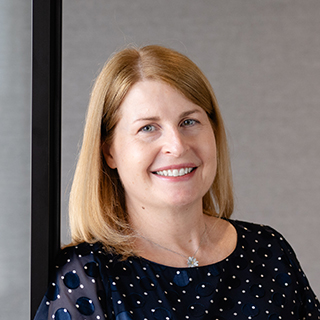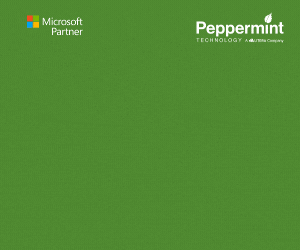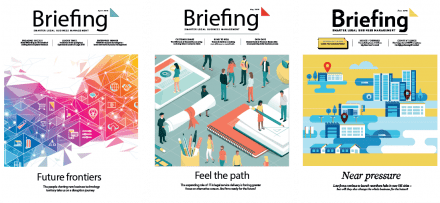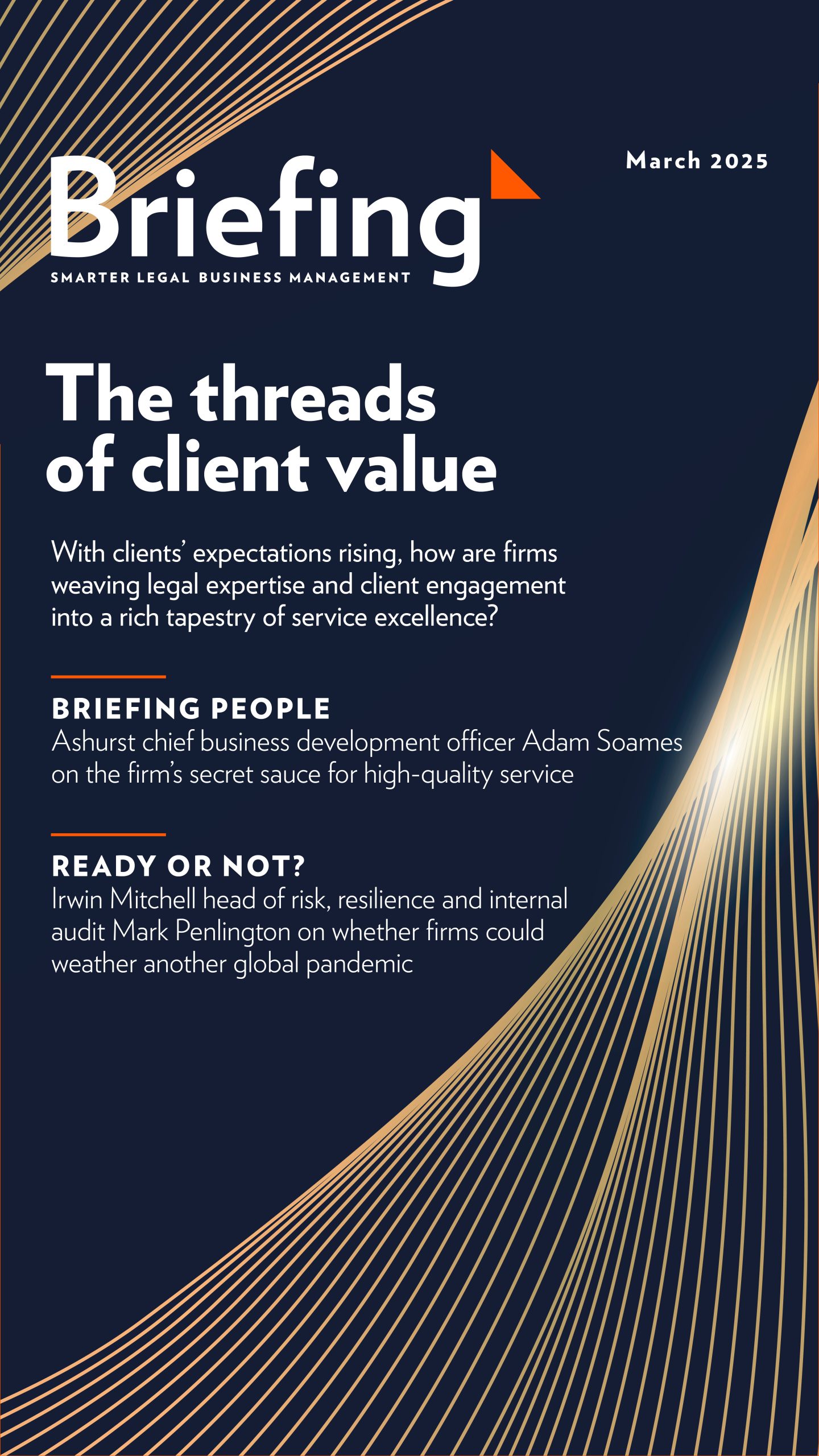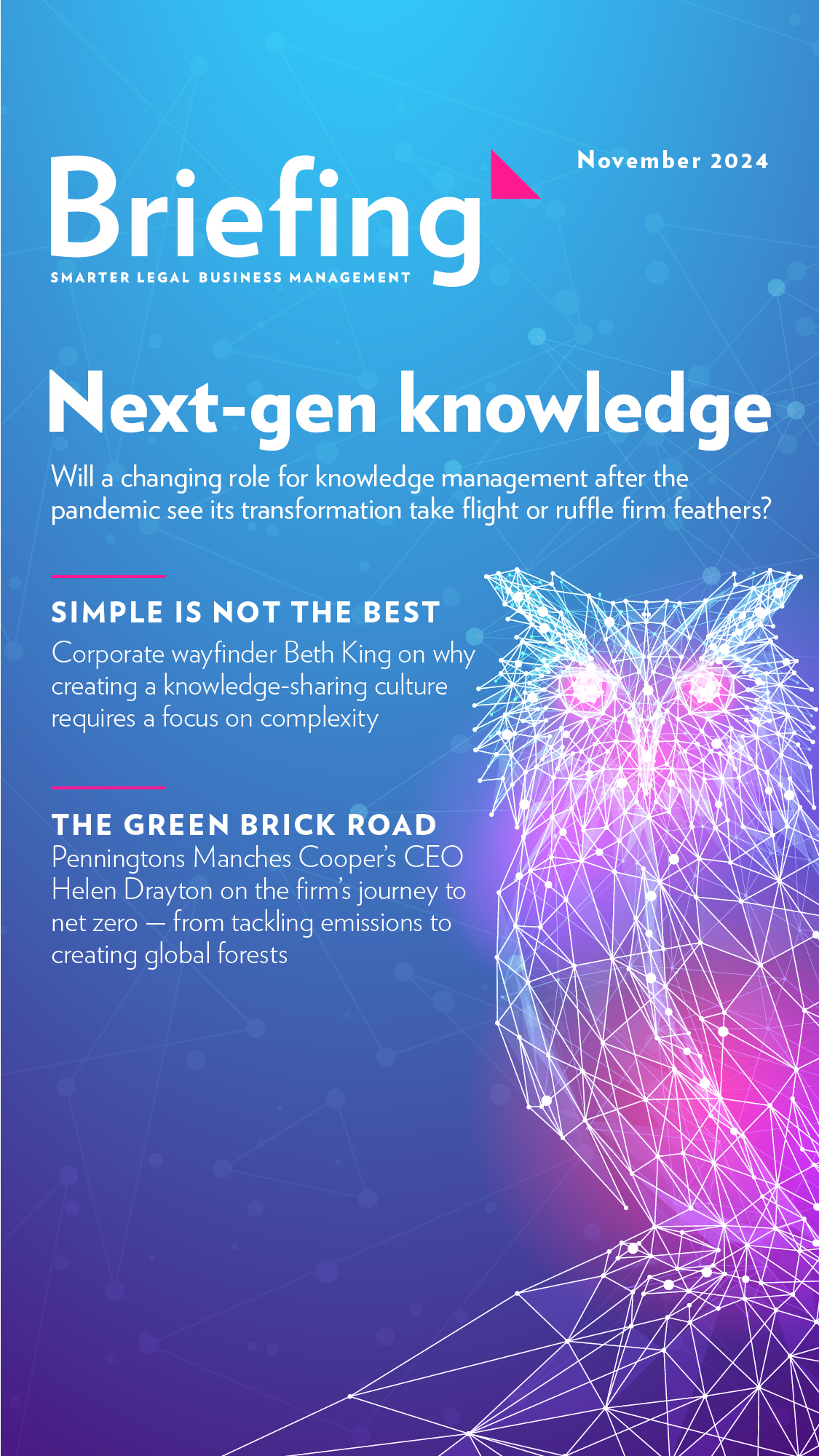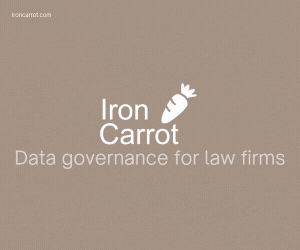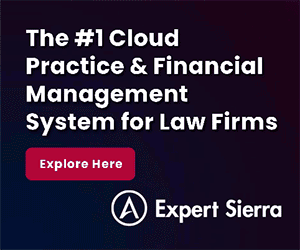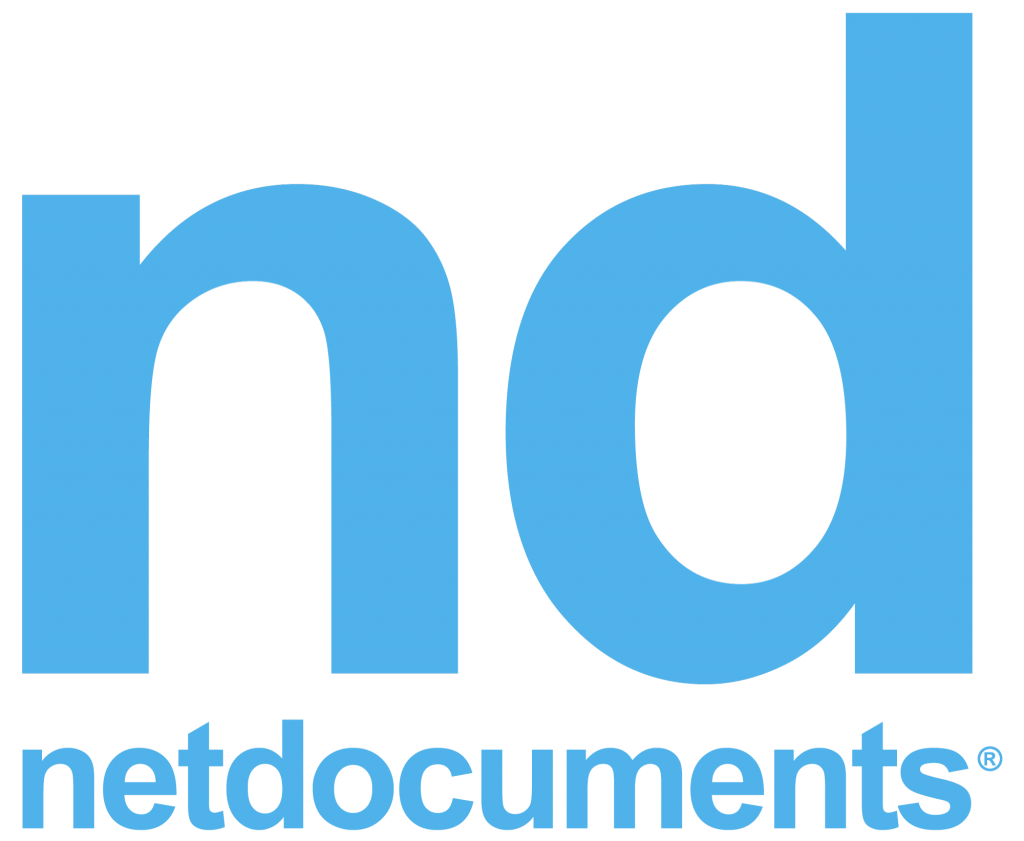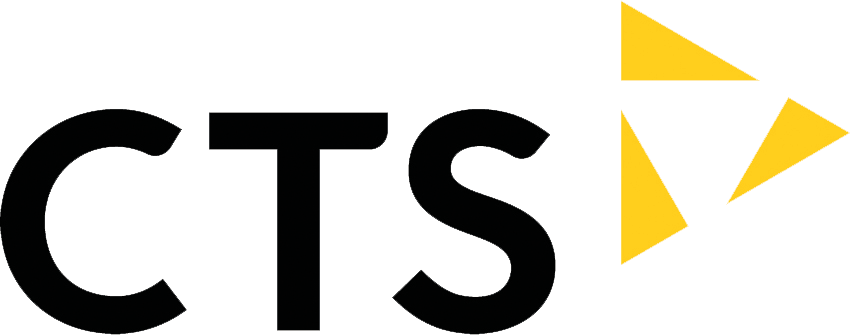are law firms on top of hybrid-working challenges? Legal IT experts discuss a cloud-based culture
Dawn Ingle, IS director, Shoosmiths|
Anthony Stables, CIO, Forsters|
Mike Creffield, business manager, NetDocumentsnt for professional services, Salesforce|
How can law firms adapt to the cultural, security and collaboration challenges of working in a hybrid environment? Are legal businesses truly leveraging the advantages of cloud technologies? And how can legal leaders push ahead with technological transformation while staying in lockstep with their organisation’s cultural status quo?
These are some of the questions Briefing attempted to answer in our latest webcast: The platform for a more collaborative and secure law firm culture.
Watch on to hear our expert panel answer questions around these topics and discuss the road ahead for the use of cloud-based legaltech:
- Richard Brent, head of content, Briefing
- Dawn Ingle, IS director, Shoosmiths
- Anthony Stables, CIO, Forsters
- Mike Creffield, business manager, NetDocuments
New hybrid horizons
To begin, Stables contributed an overview of the recent tech transformation project at Forsters, ‘Project Apollo’, including the management of documents, a broad change of tech systems undertaken from 2018 onwards. Part of the rationale for this and other transformations was the need to drive on with agile working methods, he added, and a change of practice management system – a huge challenge for the firm.
Further changes included implementation of NetDocuments, making it possible to search pdfs, track use of documents, and the linking of documents and matters to one another as well as financial information and audit logs.
Having a more accessible, “omni-channel” approach to information and technology is one area Stables added into the mix, and one which Ingle at Shoosmiths echoed. She also discussed the challenges around law firm culture and people expectations, as well as capturing ‘watercooler conversations’. Facilitating those information exchanges is likely to take place on MS Teams open channels – though getting people talking face-to-face is a major part of the wellbeing and cultural values of the firm, she said, and WFH productivity burnout – including getting away from Teams where possible – is an issue IT perhaps will struggle to solve alone.
Both surfaced points around wellbeing issues and facilitating hybrid working on a human level, including Stables’ exhortation to avoid hybrid training calls at almost all costs.
Hear more hybrid-working insights in the full webcast recording
Want to watch the video on YouTube? Click here.
Richard Brent and leaders at Intapp discuss embedding deeper connections within firms
Pat Archbold, vice president and industry group leader – legal, Intapp|
Josh Clark, vice president – sales engineering, Intapp|
The period of new hybrid-working likely ahead for many will be a test of law firms’ collaborative mindsets and cohesive cultures. Will they be just as capable of keeping teams and functions focused on common goals, or will this require further investment?
But it has long been highlighted that firms would benefit from being more connected in any case. Pat Archbold, vice president and industry group leader – legal, at Intapp, says: “Firms have procured new technology as they’ve added and expanded departments, but they’ve viewed the data as independent pockets for specific purposes. They often haven’t really invested in connecting the information, and so they are missing several opportunities.
“They can also be highly focused on individual performance, which means less incentive to share data and put in the necessary work to keep it up to speed – and organising taxonomy is a long-term project.”
So lawyers, and those supporting them, can effectively be walking around with their own pockets of data in their pockets – but it doesn’t have to be that way.
Josh Clark, vice president – sales engineering at Intapp, gives one example of the advantage a more sophisticated approach can yield – understanding the spectrum of client industries and emerging opportunity within them with reference to more than current revenue achievements.
“One firm that covered real estate and also healthcare was able to identify a growing trend of real-estate clients converting shopping malls into health centres. You wouldn’t necessarily think of connecting those two. But by being closer to both industries, the firm could see the opportunity to overlay another type of experience to win business in those white spaces.”
Some are also leveraging client relationship management as a strategic shift more broadly, he explains – pulling market news about clients from external sources, for example, alongside real-time matter, time and billing information, to make recommendations about possible next steps that much more persuasively.
And alongside business development, there are some significant time savings to be made. Client billing guidelines can often be largely lost in bulging document management systems. “Some firms have an entire team to support on searching and reviewing pre-bills,” Clark continues. “However, integration of technology here can reduce the administrative burden, as well as a lot of complaints, and the likelihood of lost experience related to matters that could be leveraged for further client development later.”
Connecting with cloud
So what would a firm that delivered in a more connected fashion need from its technology? It’s notable that in late 2020 Intapp announced it would now sell its range of software as cloud solutions only (while maintaining support for on-premises versions).
Clark says: “Firms have been in business a long time – they’ve introduced a lot of technology in that time – so there is a bit of effort in moving to the cloud. But once achieved, costs erode with complexity. Bespoke comes at a cost.” For example, one firm with an industry-focused strategy such as was mentioned earlier identified a need to integrate its intake programme – getting early sight of any potential conflicts or profitability indicators – with its client development. The risk platform is therefore now moving to the cloud for that level of integrated clarity.
“The legal industry is a little behind others in cloud adoption – the conversation needs to happen firm by firm as they each have their history,” continues Clark. “But those that move to the cloud faster really can leapfrog the competition by integrating their data more effectively in that environment.”
Archbold adds that client and employee expectations of their firms is another case to consider here. If you’re investing in new teams of skilled data scientists to expand your revenue opportunities, you don’t want them to be wasting their time pulling data together – which the cloud could manage much faster.
“It makes for a much more productive data-management strategy, and as people can now increasingly work from anywhere, they won’t necessarily keep waiting and stick around. Leadership needs to think carefully about that as talent-chasing in the market continues to heat up.”
Artificial intelligence could in fact have some role in preserving a more connected firm here, he adds – not just by pushing increasingly more relevant updates out to people, at the right point in their working day, faster, but also spotting signs that a client – or even partner – may be preparing to move on to pastures new.
And finally, whichever datasets people are drawing on to play their individual parts better, the last 18 months have clearly highlighted the value of collaborative process to the connected whole.
Clark explains: “You see collaboration on proposals, matters, time and billing, concerning clients, and also with the client directly. Everyone is a part of a team, however distributed, and most likely in multiple teams. Each one needs allocation of all the right people, with the right access to the right applications and documents.
“That could mean chaos and confusion for management, but the provisioning of Microsoft Teams is a major player in bringing clarity.”
Indeed in summer 2021, shortly before its IPO, Intapp announced the acquisition of Microsoft 365-based creator of content and collaboration tools Repstor – designed to enable such governance frameworks for various work lifecycles, while at the same time enriching collaboration with more context from other connected systems.
Law firms will all need to keep people collaborating effectively – however their working patterns may change. But alongside the delivery of high-value data and empowering hard-won talent, the extent to which they do so could be yet another slice of competitive edge that marks out the more connected firm of the future.
Want to watch the interview on Youtube? Click here.
KNOWLEDGE AND IT LEGAL LEADERS DISCUSS DOCUMENT MANAGEMENT CHALLENGES IN A REMOTE WORKING WORLD
Alison Devlin, head of knowledge, Eversheds Sutherland |
John Hunter, chief information officer, Council of Europe|
Simon Ferres, CIO for legal, Deutsche Bank |
Dan Hauck, chief product officer, NetDocuments|
As law firms are set to shortly have their hybrid working models tested out in practice, can their people access and work on documents as effectively as they should? Do they have the tools needed to ensure client service is still a top priority, even when remote? And how do firms factor the risks associated with sensitive information into a world of remote document management?
These are the questions our panel of legal document management and knowledge experts aimed to tackle in Briefing’s latest webcast: How to transform remote collaboration. With three legal leaders from three very different organisations all having completed or facing document management system (DMS) migrations, and all facing similar challenges, we heard how each was tackling the task of balancing access to documents against the risks of losing control over content. Chaired by Richard Brent, editor-in-chief of Briefing, our speakers were:
- Alison Devlin, head of knowledge, Eversheds Sutherland
- John Hunter, chief information officer, Council of Europe
- Simon Ferres, CIO for legal, Deutsche Bank
- Dan Hauck, chief product officer, NetDocuments
Documenting collaboration
Kicking off, we heard how John Hunter at the Council of Europe realised the organisation’s IT strategy needed an efficiency revamp. Working with over 10,000 external parties, however, access and security were a high priority. In order to migrate its 35m documents from shared drives and public folders to a single platform, Hunter explained the organisation had to develop a strong change management process.
That’s an issue also highlighted by Simon Ferres at Deutsche Bank, who said much of the migration to DMS provider NetDocuments has included a “carrot and stick approach”. In terms of lessons learned so far from rolling out a new DMS, he said it’s been important to keep an open mind and put the time in to get the most out of the IT investment: “When it comes to decision-making in the design phase, don’t just accept the status quo. You may not make back your ROI if you don’t challenge it.”
Command and control
Aside from also having a new DMS on the horizon, at Eversheds Sutherland, Alison Devlin outlined a Teams-based initiative executed at the firm to create new content in support of regulatory horizon scanning for the financial services practice. MS Teams channels supported a global approach to frictionless sharing and collaboration on that issue, though she acknowledged the challenge this approach poses to the idea of a single source of truth – an issue being grappled with across many organisations.
So, how to tackle the issue of controlling content in this new world? That risk is something John Hunter is also looking at, with a keen eye on use of collaboration tools like Teams, which, if unchecked, could be akin to “opening up the Wild West” when it comes to keeping a rein on documents and knowledge. That’s why collaboration spaces and tools that retain data and communications transparently are so useful, he added.
The need to bring together content and invite people into a single platform to get the benefit of a collaborative approach – while retaining control – is a common theme across many firms, said Dan Hauck. That approach necessarily includes keeping an eye on integration with related tools like Teams, he said, for which tech providers like NetDocuments have a large role to play.
Learn more about where each of our speakers is on the remote document collaboration journey, how they’re tackling emerging challenges and what solutions they recommend to solve common issues, plus hear answers to audience questions, by watching the full video.
Want to watch the video on YouTube? Click here.
law firm and tech experts grapple with the numbers and discuss: how to harness data for added value
Sadie Baron, chief marketing officer, Reed Smith|
Bob Hetherington, partner and head of management information, Weightmans|
Vincent Perrin, regional vice president for professional services, Salesforce|
How can law firms leverage data for actionable insights? How do legal businesses structure their data-gathering and cleansing processes? Who should own and drive the collection of data and how can departments work together for firm-wide benefit?
These are some of the questions Briefing asked our panel of data gurus in our latest webcast, held on 29 June 2021, and available for viewing now. Our speakers included:
- Sadie Baron, chief marketing officer, Reed Smith
- Bob Hetherington, partner and head of management information, Weightmans
- Vincent Perrin, regional vice president for professional services, Salesforce
- Chaired by Richard Brent, editor-in-chief, Briefing
Back to basics
With data-rich repositories of knowledge considered by many to be the ‘new oil’, waiting to be tapped, processed and refined, how can this valuable commodity be used to generate value for clients – and, if they’re not careful, might firms end up drowning in data?
The first step is getting data centralised, said Hetherington – at Weightmans, that has meant developing a single source of truth and having practice management, case management, finance, HR and client relationship management systems feeding into a single data warehouse.
But it’s not all about technology. Sadie Baron added that partners particularly could be prickly when it came to sharing contact and client information – but said adopting a data-sharing mindset is essential to a modern law firm’s functioning and its power to develop clients: “Everybody in the firm needs to understand we’re actually in the business of data these days – every email sent, phone call made, RFP received – they’re all data points. But there’s still a feeling that data collection sits ‘on top of’ the day job – so how do we embed data extraction as part of everyone’s day and demonstrate the value in doing so?”
Pinpoint value
At the same time, she added that firms should prioritise which data is the highest priority to collect and cleanse. “You can obsess too much about data hygiene. Pick your battles – only cleanse and enhance data that really matters to you.”
So, where is the demand for all this data coming form? “Clients aren’t just interested in basic reports any more – we’ve seen a lot of demand for benchmarking. They also want us to help drive their strategies and integrate their data into our systems,” Hetherington explained.
Sharing does create value, added Perrin, saying a reluctance from lawyers to ‘give up’ ‘their’ data is a common obstacle. “There’s a lot of effort needed in legal to deliver what’s basically table stakes in other industries – but that means the potential for gains in legal is huge.”
Hear more data-based insights in the full webcast recording
Want to watch the video on YouTube? Click here.
In-house counsel, tech experts and law firm Leaders discuss: how to price for profitability
Kate Burns, former GC, notonthehighstreet.com|
Fraser Mayfield, Iridium Technology|
Greg Saulinskas, CFO, Troutman Pepper|
David Gilmour, head of business architecture, RPC|
Are law firms behind the curve when it comes to pricing their work? Are alternative fee arrangements the way forward? Can technology and data management become the pricing model differentiators firms want them to be? These questions cut to the heart of the debate on profitable legal pricing, as well as the discussion among panellists in Briefing’s 18 May 2021 webcast: How to price for profitability.
Chaired by Briefing’s editor-in-chief Richard Brent, we heard from law firm leaders, as well as technology and in-house legal experts:
- Kate Burns, former general counsel and company secretary, notonthehighstreet.com
- David Gilmour, head of business architecture and design, RPC
- Greg Saulinskas, chief financial officer, Troutman Pepper
- Fraser Mayfield, head of EMEA, Iridium Technology
Collaboration with clients
Can pricing be a collaborative process between law firm and client? Yes, said Burns – and the key to successfully fostering that collaborative process is showcasing the business value in a given pricing structure, she added. Also crucial is putting billing information upfront: general counsels, Burns said, want pricing information upfront, including a final cost, followed by regular updates. “Transparency and predictability are key watchwords. Billing information isn’t boring – it’s just as important as the legal matter itself – and it’s not a dirty subject.”
Counting the costs
On the law firm side, Gilmour sees trends emerging around clients wanting more control over how legal work is performed, whether that’s based on location or who is performing the work. “Clients want to know more about the components and tasks involved in a piece of legal work and will challenge us to do it at a lower cost.”
Legal project management – one buzzword potentially connected to more profitable pricing – is, in Burns’ view, something clients may want to see evidence of, though it doesn’t necessarily deliver value in itself. “It’s not for me to ask how a law firm does its job – but, if there are warning flags or issues, I will want to see more detail and check how the work is being undertaken.”
Data time
Though he doesn’t see evidence that hourly rates are about to disappear, Gilmour said conversation is turning more to value-pricing – which means a greater focus on innovation, technology and being more data-driven. Collecting and harnessing that data is both a technology and a behavioural problem firms will have to address, he said – a point of view Saulinskas echoed, who said the legal sector has made little progress in this area in the last four years.
Many law firms would benefit from a closer look at their existing datasets, added Mayfield, both for pricing future work and arming partners for conversations with clients. “A lot of firms make the mistake of going straight to what they expect to bill, instead of finding out the cost of delivery. Comparing internal scenarios, in terms of cost to deliver as well as billing structures, can help firms develop better proposals for clients.”
Questing further
Other questions put to the panel by the audience included:
- How can firms move to fixed-fee billing and ensure profitability?
- How should firms position and market alternative fee arrangements?
- Will chief data officers start to appear in law firms of the future?
Find out our panel’s answers to these questions, and more, in the full video.
Want to watch the video on YouTube? Click here.
Leaders at Elevate and Obelisk debate: how can law firms leverage technology to compete with ‘alternative’ legal service providers?
Dana Denis-Smith, CEO and founder |Obelisk Legal Support
Kunoor Chopra, vice president of legal services and co-founder|Elevate Services
Are law firms seeing competition in all the wrong places? Are legal leaders right to still see “firms like mine” as their biggest source of competition?
And what should they make of the increasingly embedded ecosystem of so-called ‘Alternative Legal Service Providers’ (ALSPs) – are they a greater threat to law firms’ business models or are they potential partners?
These were among the key points up for debate in Briefing‘s Legal IT Landscapes 2021 digital discussion, chaired by Briefing editor-in-chief Richard Brent and featuring key speakers from New Law businesses:
- Dana Denis-Smith, CEO and founder of Obelisk Legal Support, a flexible lawyering solution that draws many of its professionals from City law firms in search of a more flexible career;
- Kunoor Chopra, vice president of legal services and co-founder, Elevate Services, which provides technology consulting and services to legal departments and law firms across the globe.
Competition time
Firms may have a potential strategic blind spot around how they think of their competition, according to our speakers. Although both Chopra and Denis-Smith agreed there’s plenty of opportunity to go around, Chopra pointed out the surprising focus law firm leaders continue to place on competition that looks more or less identical to their own firms. Briefing’s Legal IT Landscapes 2021 report found a clear majority of law firm leaders (84%) still see “Other law firms like mine” as their main source of competition – an increase on last year’s figure.
Strategies for the future
Firms, we heard from Denis-Smith, have the chance to differentiate themselves by properly leveraging the technology they already have, playing to their strategic strengths and aligning their talent and technology with those points. They also need to better understand their own resourcing models and supply chains if they’re to keep up with client demands.
Chopra agreed that firms need to recognise opportunities to become more competitive through greater service delivery efficiency, whether that’s through technology adoption or strategic partnerships with ALSPs – currently a relative rarity – and through whole-heartedly committing to diversity initiatives.
Change mindset
The ‘alternative’ part of these ALSP or New Law business models, both speakers agreed, shouldn’t be considered alternative in 2021. With the flexible working and rapid digitalisation forced on firms by the pandemic in many ways proving a huge boost to change initiatives, both concluded that firms need to capitalise on enthusiasm for technology and find new ways of delivering legal services to get out in front of the competition – be that the usual suspects or the ‘alternatives’.
Want to watch the video on YouTube? Click here.
Sarah Walker-Smith tells Richard Brent why 2020 is the right year to transform both strategy and structure at Shakespeare Martineau
If you started a law firm from scratch today, which processes and other aspects of the organisation as it stands would you keep and which would you ditch? It’s a question Briefing has posed in our research and at events several times over the last 10 years – a nod to the challenge that long legacy can often present to useful change – and it surely seems one for 2020.
It has certainly been on the mind of Sarah Walker-Smith, who is less than two years into her role as the CEO of Shakespeare Martineau. In the summer of 2019, her board and a newly appointed shadow board comprising 12 different voices at the firm were both locked away for a set of workshops – “in a forest, literally,” she says – and out came perspectives on what a new firm strategy ought to look like.
Walker-Smith had a plan before, but it needed sense-checking. And one outcome of this consultation is that Shakespeare Martineau is now a group – a collection of individual LLPs under one umbrella, each of which will have more autonomy over how they go to market and manage business for themselves.
She explains: “We know that we need to be significantly bigger to fulfil the potential of everyone who works at the firm – but one rather strange thing about the way the legal sector tends to grow is the acquisition of firms only to annihilate them. You buy a great brand, with great ideas, but because you’re bigger, your ideas are inflicted on them. It’s our way or the highway. We want to reverse that.”
In what is dubbed the ‘House of Brands’ strategy, new names are now immediately being sought out that find this prospect appealing, potentially in a niche area or a particular part of the country. Under the umbrella, they’ll be joining the likes of Lime Solicitors (personal injury and clinical negligence), Corclaim (debt and loss recovery) and the town planning consultancy Marrons Planning. The latter, as an example, already “sits very neatly alongside the firm’s legal services as its own brand,” Walker-Smith says. “But we need to liberate it.”
At the same time, she highlights, many legal businesses may “genuinely sadly” be considering their options in the climate brought on by Covid-19. “They could be struggling with insurance, or keeping up with compliance, and we are able to help them to continue doing what they love to do, but without telling them how to do it.”
There will be economies of scale through shared services, such as IT, she explains, and additional investment options are also being considered: “How far and how fast will depend on how much we need.”
This article was taken from ‘Brand promises’ in Briefing November/December 2020 – Alert to change. Read the full publication here.
organise: virtual roundtable WITH NETDOCUMENTS
Guy Phillips, VP of international business|NetDocuments
Simon Ferres, CIO|Deutsche Bank
Lynne Jones, head of library and information services|HFW
John Turner, COO|Ellisons Solicitors
VIRTUAL EVENT PARTNER
In this instalment of Briefing and NetDocuments’ Work Inspired series, we explore how law firms and their clients adopt systems and approaches to transform how they Organise key aspects of work.
Briefing editor-in-chief Richard Brent and VP of international business at NetDocuments Guy Phillips are joined by guests to discuss how technology is helping firms’ increasingly dispersed employees to collaborate with one another in new ways, in the interests of individual productivity and firm-wide efficiency – as well as the opportunities for automation to relieve repeated or redundant workload when all areas of the business are adapting to new challenges.
Simon Ferres, CIO for legal at Deutsche Bank, sets out the legal team’s method of collecting information about the key processes people already follow, before deciding which reveal strong potential for further automation in future – and only then assesses and prioritises the projects to pursue by likely impact. He also highlights the ways that law firms have best supported his business goals with their own automation expertise.
And John Turner, chief operating officer at Ellisons Solicitors, explains how the introduction of a new document management system has played a critical role in the firm’s response to the pandemic. Essential homeworking created a catalyst for accelerated digitisation of files, enabling paper-light processes, reorganisation and communication change, and of course great appreciation of the advantages of efficient access and new levels of agility.
Lynne Jones, head of library and information services at HFW, also joins the group to discuss where automation projects have produced the most tangible advantages in each of their businesses to date, the challenges when introducing and embedding them, and several other processes – human-focused no less than IT – that have needed to change.
Webinar time: 55 minutes. Take a look at the YouTube page for specific timestamps, so you can find content more easily.
protect: virtual roundtable WITH NETDOCUMENTS
Guy Phillips, VP of international business – EMEA|NetDocuments
VIRTUAL EVENT PARTNER
Work Inspired is a brand new series of virtual events, exploring the different ways that technology solutions can support law firms surrounding some of their top remote-working challenges, enabling new levels of efficiency and productivity at the same time as ensuring robust risk management.
In this first installment – with the theme of ‘Protect’ – Briefing editor-in-chief Richard Brent and Guy Phillips, VP of international business – EMEA and APAC – at NetDocuments, are joined by a group of information security experts from leading UK and international law firms, including Akin Gump, Carpmaels & Ransford, Osborne Clarke, Irwin Mitchell, and Cuatrecasas, to discuss subjects including the surge in client demands for more information about firms’ security processes and capabilities; the ways that widespread remote working changes a firm’s spectrum of security needs and challenges; and the significance of a cloud solution and option of introducing a need-to-know security regime for balancing the priorities of tight document control and supporting individual and team productivity.
If firms now consider expanding the opportunity for agile-working in the longer-term, it will be critical that their people can access their work, and collaborate, where and when they need to – but only with the very best protection against the very real risk of cyberattack and data loss.
Webinar time: 50 minutes. Take a look at the YouTube page for specific timestamps, so you can find content more easily.
virtual roundtable: the legal workspace, reworked, WITH CTS
David Fazakerley, in-house legal CIO|CTS
VIRTUAL EVENT PARTNER
What will a leading law firm office, workforce and operating model look like by the end of the year 2020? Following our research report ‘New model legal’, powered by CTS, editor-in-chief Richard Brent and CTS in-house legal CIO David Fazakerley, are joined by C-suite leaders from a broad range of firms to discuss transformations both already underway and under consideration to help their firms to emerge from lockdown in the strongest shape possible to compete. Topics up for discussion include:
- How are office spaces and facilities already being reimagined?
- How much of today’s remote-working patterns will remain?
- Where are technology investments making the biggest difference to protecting productivity, collaboration and culture?
- How much are client considerations affecting strategic decisions?
- What are the top challenges experienced and opportunities identified overall?
Webinar time: 1 hour. Take a look at the YouTube page for specific timestamps, so you can find content more easily.
Want more content? Read the New model legal research, including commentary from CTS, here.


